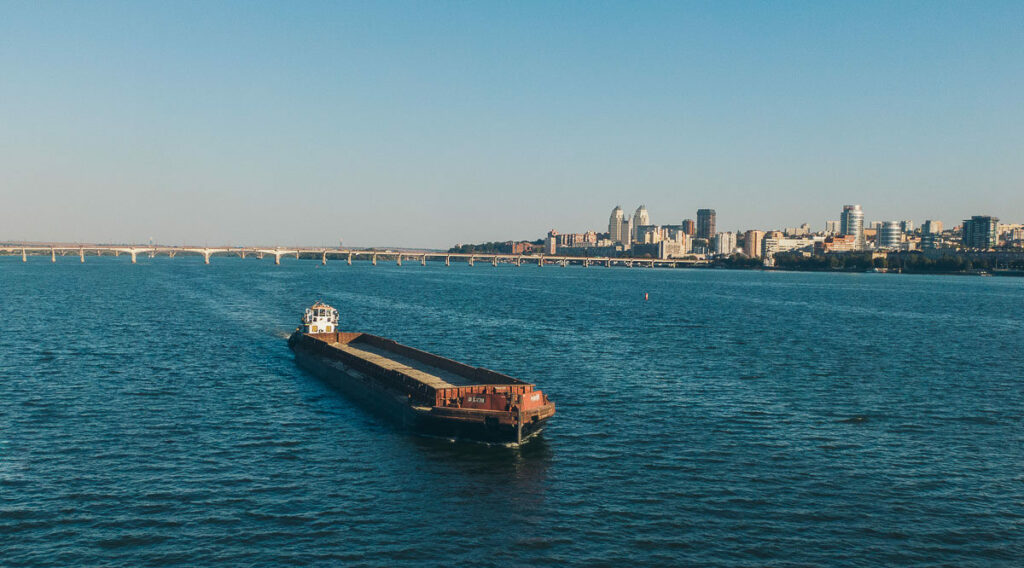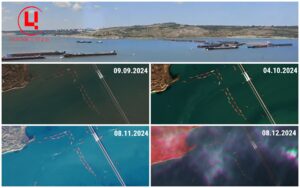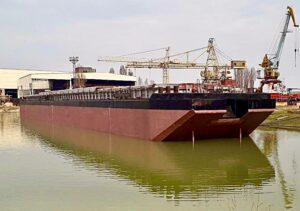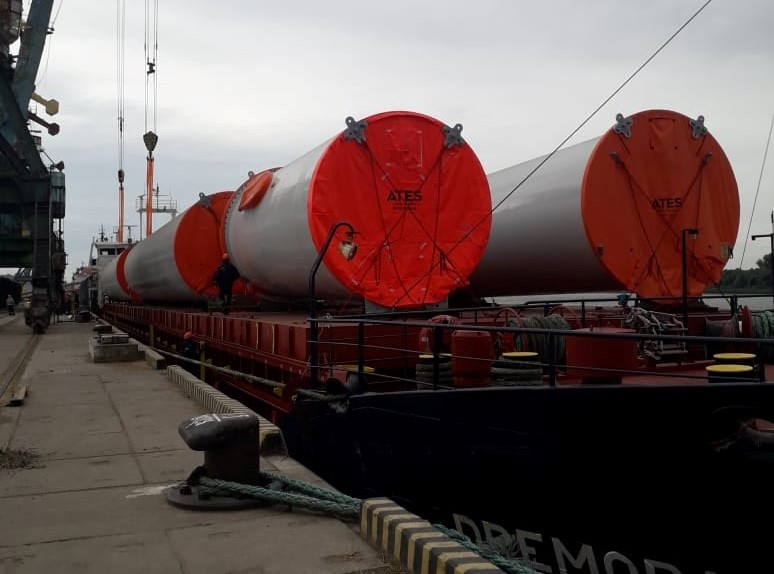Import of barges to Ukraine. How to satisfy the demand for transportation along the Dnipro

Cargo shipping along the Dnipro is slowly but surely gaining momentum. Is the fleet keeping up with the volume of cargo?
Cargo shipping along the Dnipro continues to grow. So, for 8 months of this year, 8.25 million tons of cargoes were shipped along the river. At the same time, cargo shipping for the entire last year amounted to 11.25 million tons.
In the overall cargo classification, the largest growth was shown by construction materials, the transportation volumes of which increased by 94.3% and reached 5.77 million tons. Grains are in second place, but their transportation volume decreased by 22.2% compared to last year and amounted to 1.59 million tons. Bulk construction materials, coal, and large structures are also transported along the river.
The number of voyages is growing accordingly: during January-August, 9,834 voyages were recorded along the Dnipro, against 6,528 – a year earlier. The demand for vessels is growing, but is there a way to satisfy it? As of the end of last year, there were 366 river cargo vessels in Ukraine (data from the Shipping Register of Ukraine). Of this number, almost 88% of vessels are over 25 years old, and the average age is 34 years. As for the vessels of the mixed type (river-sea), their average age is less than 24 years, almost half of this fleet is under 15 years old. Note that our average cargo vessel is capable of transporting 2,000 tons of cargo. Barges with a carrying capacity of up to 4.5 thousand tons have appeared only recently.
Analysts from the Ministry of Infrastructure of Ukraine announce the figure of 576 thousand tons – this is the latest total carrying capacity of the merchant river fleet in Ukraine. The annual capacity of the fleet, which is based on an average 10-day voyage (including empty vessels and winter cessation of navigation), is more than 15 million tons. If we talk about a more serious increase in cargo traffic along the Dnipro, then Ukrainian vessels will not be able to meet the growing needs of shippers. Moreover, the old fleet is becoming obsolete and subject to decommissioning, which will accordingly reduce the overall capacity of cargo shipping along the Dnipro.
Which way will the operators choose to solve this problem? Hardly anyone is following the path of creating a new fleet, the only exceptions are large companies like Nibulon and Grain-Transshipment. Basically, the growth of the fleet on the Dnipro is due to the import of used vessels or due to the temporary chartering of ships under foreign flags. So today, more and more barges are being chartered by non-resident companies on the river.

However, customs procedures for the import of barges into Ukraine have their own difficulties. USM asked Olexandr Gladilin, Director of the customs brokerage company Port Clearance, about some of the nuances of this path.
How exactly are barges brought to Ukraine?
Bareboat or time-charter import to Ukraine supposes registration of the barge in the temporary import regime. The main attention of the customs is focused on checking the customs value of the vessel and the amount of taxes paid in part for the duration of the charter (3% of the total amount of import taxes for each month). Considering that customs rarely clears barges, any available sources are used to compare the cost of a particular vessel with its analogues. Most often, this is the price report of an expert surveyor who has the appropriate certification, as well as register and vessel certificates describing the type, year of construction and cargo capacity of the barge. Both the documents of the country of export and specialized sites are taken into account.
Another feature of customs clearance is the absence of a shipping document, which is obligatory for registration of the declaration. Considering that the barges, most often, are not self-propelled, and they are towed by another vessel, a general declaration for the tug is provided for registration instead of the bills of lading that are “favorite” by customs.
Have there been any attempts to smuggle barges into Ukraine?
I am not ready to boast that I know the problems of every barge imported into Ukraine. When a shipowner imports a particular vessel, then, at least, it would be logical to work out all the issues with documents in order to avoid pitfalls and problems from customs and law enforcement agencies. And any shipowner will make a preliminary analysis, consult with a customs broker, a shipping agent, and a register. The importation of the vessel should not be random, but with a clear understanding of the importation strategy. Of course, there are also exceptions to the rules in practice, when they are imported randomly, without understanding the requirements, and then they resolve issues in short order, when the vessel is at the berth. If the charterer is not ready for the import of the vessel documentarily, then it is better to postpone this.
How acute is the problem of determining the customs value when importing barges?
This problem occurs with every import. The problem of determining the customs value of vessels is exactly the same as when importing smartphones, toys, costumes, and so on. The vessel is assessed in the same way by the customs, and the customs value is checked.
In practice, we always work through this issue in great detail, because every shipowner is interested in avoiding unnecessary overpayment of taxes. In order not to allow customs to overestimate the value of the vessel, it is necessary to prepare an impressive package of price documents and solve this problem “in the bud”. To do this, we conduct a preliminary analysis of the customer’s documents and recommend certain steps that in the future will not give the customs a chance to make an unlawful decision.
The professional level of customs today is low, and it has been declining over the years. The customs do not understand how much a vessel can cost, and acts primitively: it tries to compare the cost of a vessel with analogs that were previously issued in Ukraine. When he realizes that the barge is a unique vessel, and it is often impossible to find analogues, an attempt begins to drag in some fleeting similar vessels that do not correspond to the estimated deadweight, year of production, or other parameters.
Then the barges begin to be assessed approximately, “by guess and by gosh”. Such an estimate by customs is sometimes one and a half to two times higher than the real value of a particular barge. In order to fight off such “wishlist” of customs, together with the customer, we prepare additional documents in advance. Taking into account the existence of many years of practice in the registration of vessels, there is a whole set of recommendations that allow to prove to the customs the objective value of the vessel.
How to get the Ukrainian flag upon import for the operation of the vessel in our country?
Indeed, a Ukrainian flag is needed for coastal shipping in the internal waters of Ukraine. If a shipowner plans to purchase a vessel and use it in Ukraine, he has two options. The first is to buy a vessel on behalf of a Ukrainian company, import it and pay all import taxes at once, in one moment.
The second way is temporary import. The vessel is acquired on behalf of a non-resident company controlled by the shipowner, which then enters into a charter agreement with the Ukrainian company. As part of such a charter, a Ukrainian company leases a vessel from your own non-resident company. In other words, the vessel belongs to you, but as a non-resident of Ukraine.
For customs, this is the usual lease of a foreign vehicle. The vessel is registered in the regime of temporary import and at the same time, on the basis of the charter, receives the Ukrainian flag. This is convenient, because the temporary import regime makes it possible to pay import taxes in installments, at 3% per month of the total amount.
Are there any problems with re-registration after temporary import, when its term ends?
The main problem is related to the fact that the legislation does not clearly describe the procedure for re-registering a vessel for import. In practice, one has to deal with attempts by the customs to collect extra payments to the budget, and this is an impressive loss for every shipowner. Because of this, the re-registration of the vessel is sometimes disadvantageous for the shipowners, and they decide to renew the temporary admission.
According to customs legislation, when re-registering a vessel from a temporary import regime to an import regime, you are not required to pay the entire amount of import taxes, but the difference between the amount of taxes on the day of re-registration and the amount that you have already managed to pay to the budget during temporary import. But this is only the first part of taxes.
The second part is interest. It is calculated extremely unprofitable for the ship owner. The longer the period of temporary importation, the greater the amount of the penalty. When shipowners want to re-register a vessel and look at these wild penalties, they often choose to leave the vessel on temporary import regime. Or they take risks to transfer the vessel to a Ukrainian company and not declare this fact to customs, respectively, without paying taxes. If the customs authorities reveal such facts, the shipowner will receive impressive fines and protocols.
Is it profitable to import barges to Ukraine?
Rather yes than no. With the opening of the Dnipro from January 1st, 2022, river cargo shipping will get a powerful boost for vessels under a foreign flag. But the river fleet today in Ukraine is sorely lacking. Only large companies or those with cheap loans can build a barge “from scratch”. These options are not available for the average shipowner who wants to make money on cargo shipping by barges along the Dnipro. Therefore, the import of a used foreign fleet is uncontested for them.
Nevertheless, the question “how to bring the barge into Ukraine” is a budgeting issue. You need to calculate everything, import the vessel and use it according to these calculations. The question is how to carry out these calculations correctly, and so that your business plan does not initially have gaps and errors. To do this, it is advisable to seek advice in advance from competent experts who will help to calculate the amount of import taxes and give recommendations on how to anticipate problems with customs clearance.
Ruslan Soroka.




